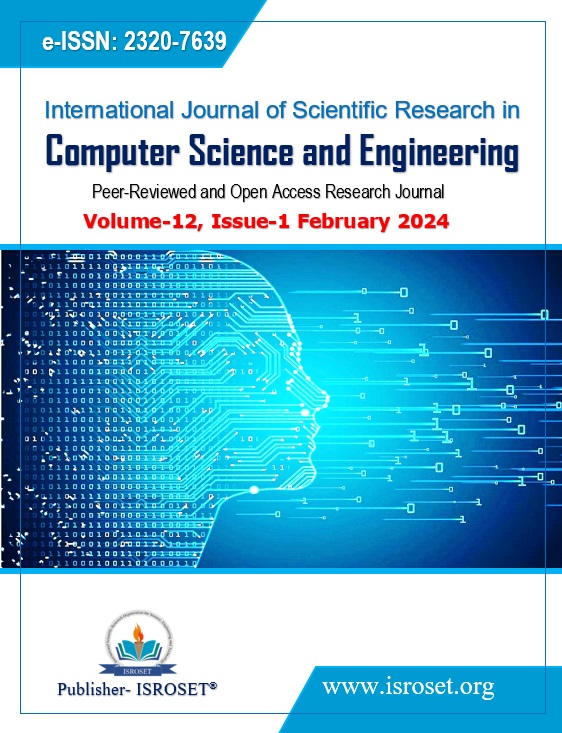Evaluating the Permissions of Monitoring Mobile Applications for Remote Employees: Analysing the Impact on Employer Trust and Employee Privacy Concerns
Keywords:
Employee monitoring, mobile applications, remote work, privacy issues, trustAbstract
Amid the worldwide COVID-19 pandemic, there has been an extraordinary surge in remote work, bringing attention to its lasting effects on the modern workforce. This significant change has led organizations to adopt remote work as a permanent element, requiring them to develop flexible and robust work approaches. Amidst the exponential growth of remote work, the use of monitoring apps to oversee employee tasks has become more common. However, the widespread adoption of these apps has raised significant concerns about the privacy of data and the rights of employees. This study focuses on examining the privacy problems associated with monitoring mobile apps designed for remote workers. We looked at 12 such apps. To evaluate the privacy concerns associated with mobile applications used for monitoring remote employees, we employed a vulnerability assessment tool. Surprisingly, all 12 apps lacked privacy policies, and also all had permissions that could potentially violate employees` privacy by revealing sensitive information about them. This research provides important insights into the areas of data privacy, employee monitoring, and remote work practices. It offers guidance to app developers and organizations on how to strike a balance between monitoring productivity and protecting employee privacy rights. By addressing the issues raised in this study, stakeholders can create a safe and supportive environment for remote workers while still respecting their privacy and building trust.
References
P. V. Falade, “Analysis of 419 Scams?: The Trends and New Variants in Emerging Types,” vol. 11, no. 5, pp. 60–74, 2023.
S. S. -, “Design and Implementation of Chatbot using Python,” Int. J. Multidiscip. Res., vol. 5, no. 6, pp. 13–18, 2023, doi: 10.36948/ijfmr.2023.v05i06.9993.
R. C. Jalagat and A. M. Jalagat, “RATIONALIZING REMOTE WORKING CONCEPT AND ITS IMPLICATIONS,” no. April, 2019.
S. Trivedi and N. Patel, “Virtual Employee Monitoring: A Review on Tools, Opportunities, Challenges, and Decision Factors,” Empir. Quests Manag. Essences, vol. 1, no. 1, pp. 86–99, 2021, [Online].
S. E. Chang, A. Liu, and S. Lin, “Exploring privacy and trust for employee monitoring,” Ind. Manag. Data Syst., vol. 115, pp. 88–106, Feb. 2015, doi: 10.1108/IMDS-07-2014-0197.
D. J. Borkovich and R. J. Skovira, “Working From Home?: Cybersecurity in the Age of Covid-19,” no. September, 2020, doi: 10.48009/4.
O. Karpenko, A. Kuczabski, and V. Havryliak, “Mechanisms for providing cybersecurity during the COVID-19 pandemic?: Perspectives for Ukraine,” March 2021.
S. Vicaria, “The Rise Of Remote Work And How To Handle A Remote-First Team,” 2023.
G. Crossland, A. Ertan, and N. M. Anima, “Remote Working and Cyber Security,” no. January, pp. 1–27, 2021.
A. M. Jalagat, “Rationalizing Remote Working Concept and,” Glob. J. Adv. Res., no. 3, pp. 95–100, 2019.
J. R. C. Nurse, N. Williams, E. Collins, N. Panteli, J. Blythe, and B. Koppelman, “Remote Working Pre- and Post-COVID-19?: An Analysis of New Threats and Risks to Security and Privacy,” pp.1–8.
L. Atst?ja, D. R?t?tis, S. Deruma, and E. Aksjo?enko, “Cyber Security Risks And Challenges In Remote Work Under The Covid-19 Pandemic,” no. January 2022, pp. 12–22, 2021, doi: 10.15405/epsbs.2021.12.04.2.
K. Okereafor, Cybersecurity in the COVID-19 Pandemic, no. March. 2021. doi: 10.1201/9781003104124.
M. Burrows, D. Hadzic, KPMG Internacional, and K. Stoltz, “Current trends in remote working,” KPMG Glob., pp. 2–17, 2022, [Online].
I. Aldasoro, J. Frost, and L. Gambacorta, “Covid-19 and cyber risk in the Financial sector,” no. 37, 2021.
B. Obada-obieh, Y. Huang, K. Beznosov, and K. Beznosov, “Challenges and Threats of Mass Telecommuting?: A Qualitative Study of Workers This paper is included in the Proceedings of the Seventeenth Symposium on Usable Privacy and Security .,” 2021.
B. J. Arnold, C. Kou, and C. Oates, “Cyber Security and Privacy risks in a remote work environment,” 2020.
M. K. Pratt, “Remote work cybersecurity: 12 risks and how to prevent them,” 2022.
K. J. Rotenberg, “Trust in the Workplace,” Psychol. Interpers. Trust, no. June, pp. 92–101, 2019, doi: 10.4324/9781351035743-9.
S. K. Parker, C. Knight, and A. Keller, “Remote Managers Are Having Trust Issues,” 2020.
D. Zielinski, “Monitoring Remote Workers,” 2020.
A. Dimitropoulou, “Remote Work and its effects on Work-Life Balance,” 2023.
P. V Falade and G. B. Ogundele, “Vulnerability Analysis of Digital Banks ’ Mobile Applications,” vol. 1, no. 1, pp. 44–55, 2022.
C. Hawes, “What is mobile app monitoring? And the importance of mobile analytics,” 2022.
E. Czerwonka, “How do companies track employees?” 2023.
Immuniweb, “Immuniweb AI for Application Security,” 2022.
ImmuniWeb, “ImmuniWeb AI for Application Security,” 2023.
C. Kumar, “12 Mobile App Scanner to Find Security Vulnerabilities,” 2022.
SoftwareTestingHelp, “10 Best Mobile APP Security Testing Tools In 2022,” 2022.
Iubenda, “What is a Privacy Policy?,” 2023.
G. McDowell, “30 App Permissions To Avoid On Android,” 2020
Downloads
Published
How to Cite
Issue
Section
License

This work is licensed under a Creative Commons Attribution 4.0 International License.
Authors contributing to this journal agree to publish their articles under the Creative Commons Attribution 4.0 International License, allowing third parties to share their work (copy, distribute, transmit) and to adapt it, under the condition that the authors are given credit and that in the event of reuse or distribution, the terms of this license are made clear.







